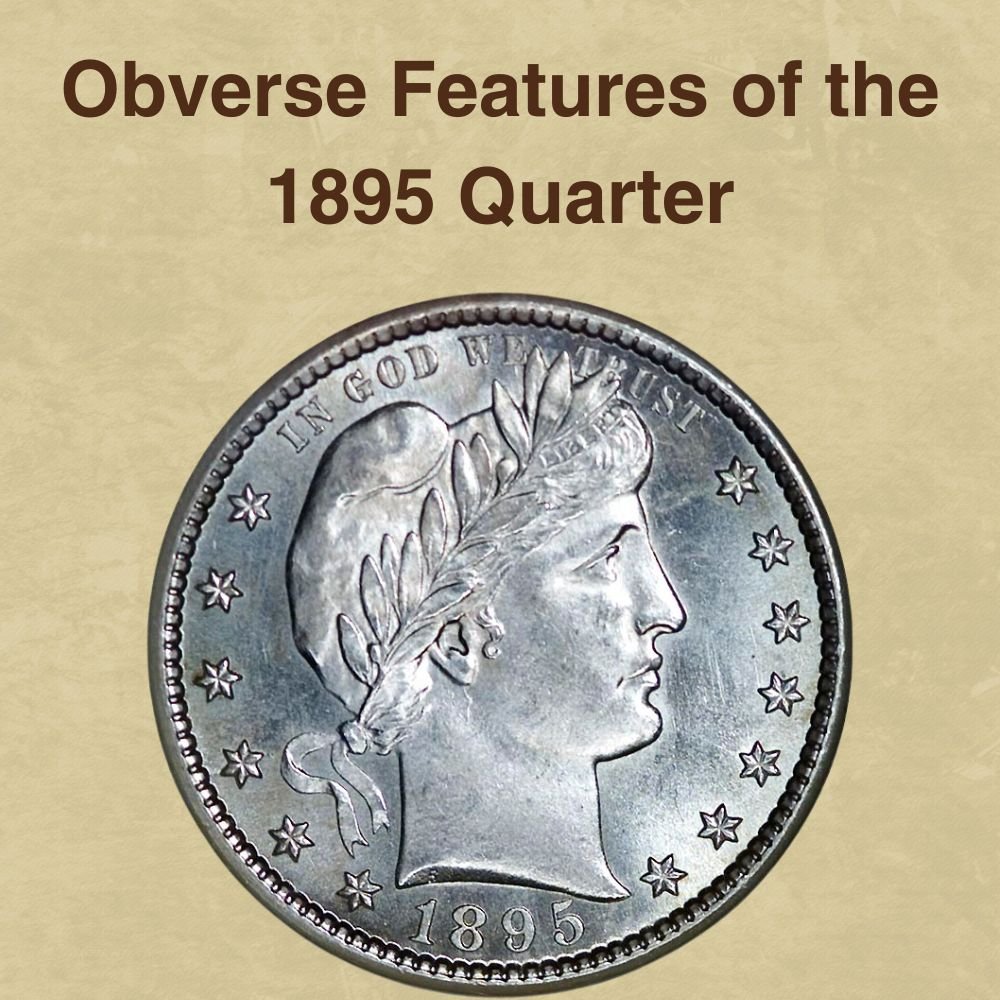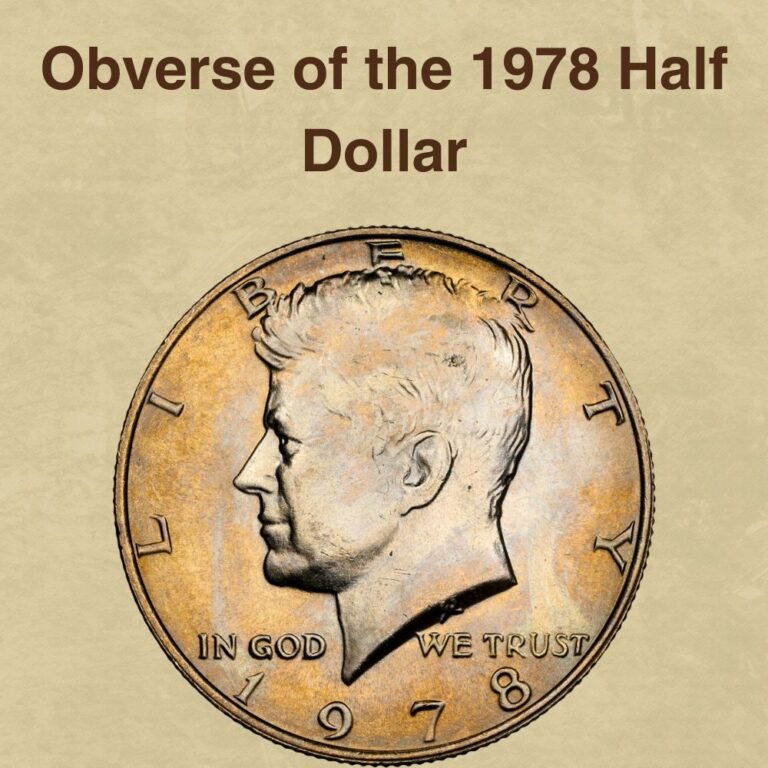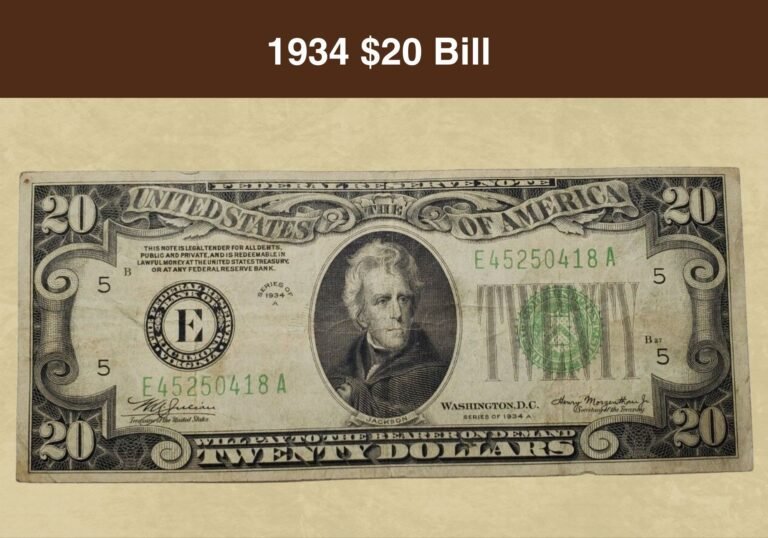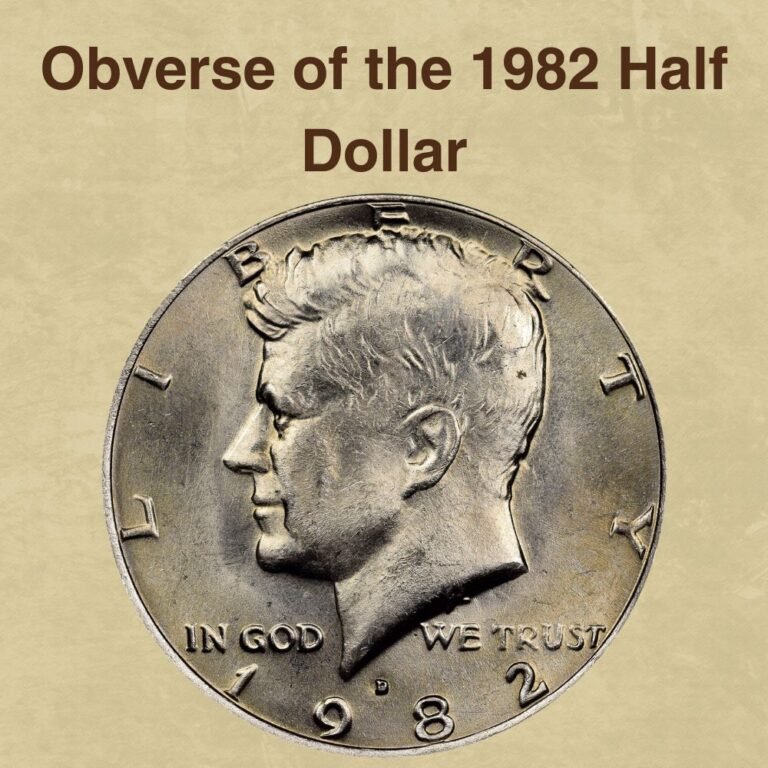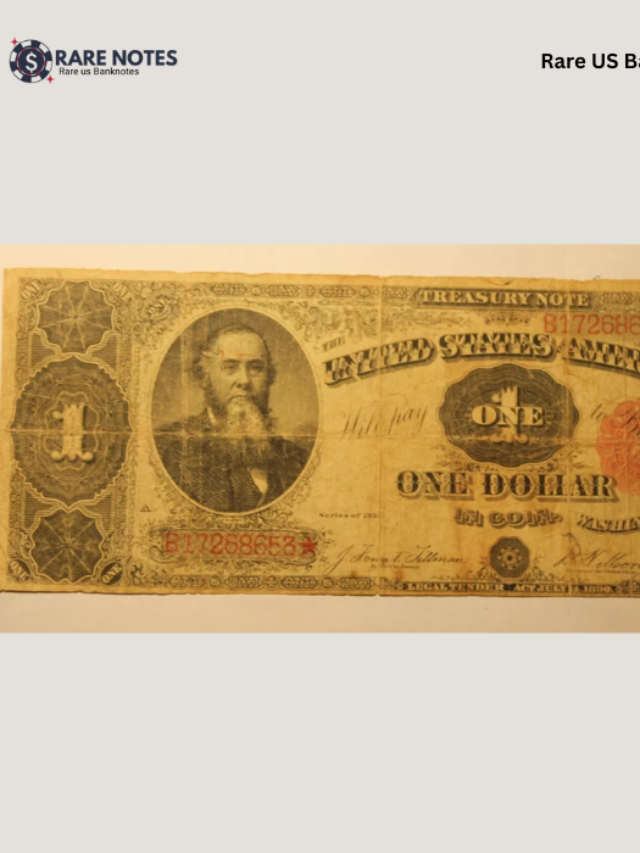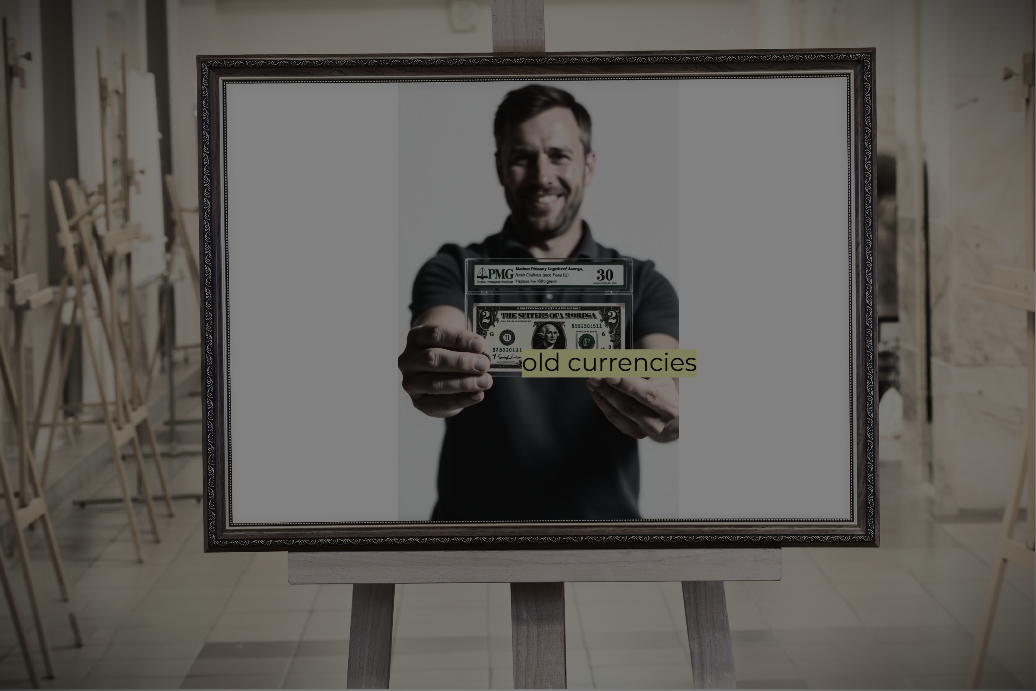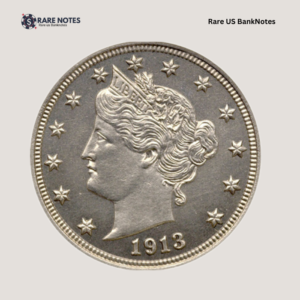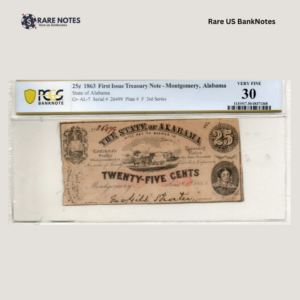Are your building a Barber quarter set? If so, you are probably curious about the value of the 1895 quarter and whether this coin is worth adding to your collection. This guide will explain everything you need to known about the 1895 quarter value.
Although not considered a key date, the 1895 Barber quarter had a noticeably low mintage. The 1895-S quarter minted at the San Francisco Mint is particularly sought after by collectors due to its low mintage—Mint State examples and Gems are pointedly rare.
Without a doubt, if you are looking to complete your Barber quarter set by date, the 1895 quarter is an important piece! So, let’s dive in and discover: How much is an 1895 quarter today?
1895 Quarter Value Chart |
||||
| Mint Mark | Good | Fine | Extremely Fine | Uncirculated |
| 1895-No Mint Mark Quarter Value | $20 | $55 | $135 | $8,000 |
| 1895-O Quarter Value | $30 | $85 | $200 | $9,000 |
| 1895-S Quarter Value | $35 | $150 | $275 | $22,500 |
| 1895- Proof Quarter Value | – | – | – | $14,000 |
History of the 1895 Quarter
The 1895 quarter is part of the Barber coinage series, which includes the dime, quarter, and half dollar. The United States Mint produced Barber quarters between 1892 and 1916, although production declined sharply around 1894 and 1895 due to a particularly acute economic depression.
The Barber coinage replaced the Seated Liberty design, which had been in existence since the 1830s. By the late 1880s, the design faced mounting public and official criticism, with mounting calls to replace it with a new, modern design.
In 1890, Edward Leech took office as the new Mint Director and it was under his leadership that the old Seated Liberty design was phased out and replaced by the more modern Barber design. After obtaining approval from Congress, Leech organized a design competition inviting elite artists to present models for the new coins. Since only the winner would receive a $500 cash prize, most artists stayed away, resulting in a failed competition.
Faced with a flopped design competition, Leech turned to Mint Chief Engraver, Charles E. Barber and tasked him with coming up with new designs for the dime, quarter, and half quarter. Barber and Leech had conflicting ideas on how to design the new coins. But, after a prolonged back-and-forth, Barber eventually came up with new coin designs that Leech found acceptable. Soon after, President Benjamin Harrison approved the designs in late 1891, paving way for production in January 1892.
As mentioned, the 1895 quarter was minted at the peak of an economic recession, resulting in a slightly lower mintage than in the years that followed. These quarters were minted at the Philadelphia, New Orleans, and San Francisco mints and are generally common in circulated condition although most survivors are heavily worn. If you are building a Barber quarter set, the 1895 quarter is certainly an important piece to complete your collection.
Also read: Top 13 Most Valuable State Quarters Worth Money
Features of the 1895 Quarter
Familiarizing yourself with the features of the 1895 quarter can help you accurately grade and authenticate your coin. A thorough understanding of these features will also help you know what to look for in Barber quarters worth money.
Obverse Features of the 1895 Quarter

On the front side, the coin features Liberty’s right-facing portrait in a Phrygian cap and a laurel headband with the word LIBERTY inscribed at the front.
The national motto, IN GOD WE TRUST, is etched above Liberty’s head while the date, 1895, is shown at the bottom.
Thirteen stars, representing the 13 original states to join the Union encircle Liberty’s portrait. Six stars appear on the left while seven are positioned along the right edge.
Reverse of the 1895 Quarter
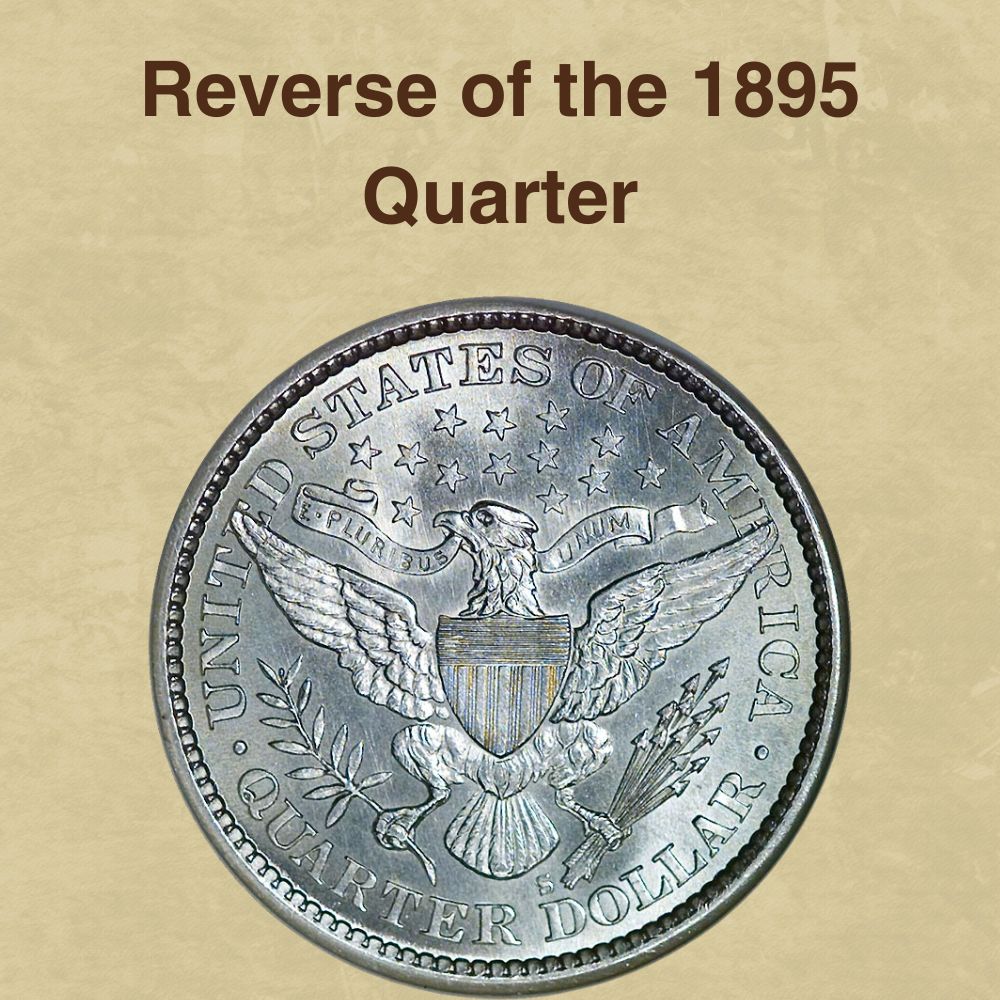
The reverse shows a representation of the heraldic eagle with its wings spread out and a shield on its breast, symbolic of the country’s independence.
In its left talon the eagle holds an olive branch and a bunch of arrows in the right one, representing peace and security respectively.
The eagle also clenches a flag in its beak with the Latin phrase, E PLURIBUS UNUM, inscribed on the flag. A constellation of 13 stars appears above the eagle’s head, symbolic of the thirteen original states.
The words UNITED STATES OF AMERICA are etched in an arc along the upper rim while the denomination, QUARTER DOLLAR, appears at the bottom.
Other Features of the 1895 Quarter
Additional notable features of the 1895 quarter include:
- Diameter: 24.30 millimeters
- Weight: 6.30 grams
- Edge: Reeded
- Metal Composition: 90% Silver, 10% Copper
- ASW: 0.1808oz
- Fineness: 90% Silver, 10% Copper
Also read: Top 16 Most Valuable Modern Quarters Worth Money
1895 Quarter Grading Guide
| # | Grade |
|---|---|
| 1 | Basal State-1 |
| 2 | Fair |
| 3 | Very Fair |
| 4, 5, 6 | Good |
| 7, 8, 10 | Very Good |
| 12, 15 | Fine |
| 20, 30 | Very Fine |
| 40 | Extremely Fine |
| 50 | About Uncirculated |
| 60 | Mint State |
| 65 | Mint State |
| 70 | Mint State |
Grading an 1895 Barber quarter can be a bit challenging because most survivors are heavily worn. That said, assessing key design features and evaluating the coin’s condition can help you approximate the grade and value.
In particular, pay attention to the inscription LIBERTY on the headband, which is a major high contact point. Also look for signs of wear on Liberty’s hair, wreath and cheek on the obverse.
On the reverse, assess the extent of wear on the eagle’s breast and feathers, as well as the shield and arrows.
Finally, consider whether the coin’s original luster is intact. Mint State examples are the most desirable and will display original mint luster with a brilliant, shiny surface, and frosting on the devices. These uncirculated pieces will also show no sign of scratches or wear, except for a few bag marks, if any.
Please check our grading guides to know your coin scale, It’s the necessary step to know the exact value of your coin.
Check out now: How to Grade Barber Quarter?
1895 Quarter Value Guides
Let’s now dive into the main question: How much is an 1895 quarter worth? The value depends on factors such as the mintage, mintmark, and rarity.
There are four varieties of the 1895 quarter. These are:
- 1895 No-Mint mark Quarter
- 1895-O Quarter
- 1895-S Quarter
- 1895 Proof Quarter
Let’s look at how much is worth today.
1895 No-Mint mark Quarter Value

The Philadelphia Mint struck 4,440,000 quarters in 1895, the highest mintage of quarters that year. As per the tradition, coins minted in Philadelphia at the time did not bear a mintmark and are therefore categorized as “no-mintmark” quarters.
Here’s a breakdown of the value of 1895 quarters:
- Circulated Examples: These are common and survivors are heavily worn. The population begins to dwindle at the Extremely Fine (XF) to the About Uncirculated (AU) grades, which are in high demand among collectors. Even in lower grades, examples will fetch more than face value, for example, one graded Good (G) will sell for as much as $20 while a Fine (F) example will fetch up to $55. An Extremely Fine example will sell for at least $135 while About Uncirculated (AU) examples, which are acutely scarce, will fetch up to $300.
- Mint State Examples: Uncirculated survivors are relatively plentiful in lower grades but become noticeably scarce starting at grade MS64. Any survivors graded higher than MS64 are genuinely rare and will attract premium prices. At MS60, expect examples to sell for as much as $335 and up to $500 for pieces graded MS62. Quarters graded MS64 will fetch at least $800 while MS66 and MS67 gems will sell for up to $3,250 and $8,000 respectively.
- Auction Record: In a record-shattering sale, Stack’s Bowers auctioned an extremely rare MS67+ for a remarkable $19,200 in 2020.
1895-O Quarter Value
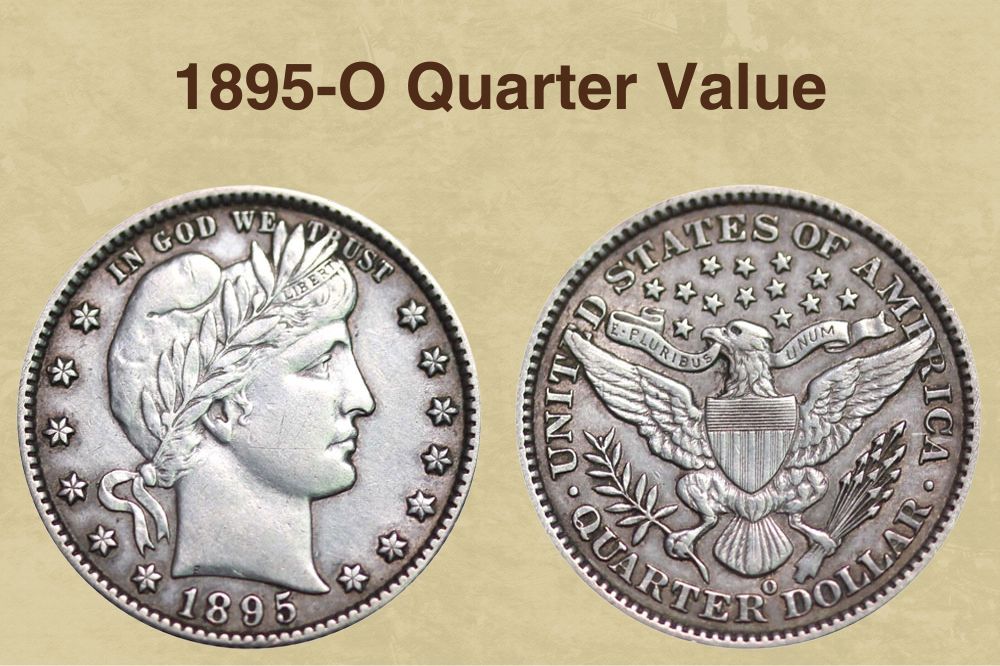
The New Orleans Mint had the second-highest mintage, producing 2,816,000 quarters in 1895. These coins generally display a weak strike especially on high contact points such as Liberty’s forehead and the arrows in the eagle’s right talon. Circulated survivors are common but the population becomes scarce starting from grade Very Fine (VF) through to About Uncirculated (AU).
Here’s what to expect:
- Circulated Examples: These are fairly easy to come across and collect although the majority are heavily worn. Those graded Very Fine to About Uncirculated will typically fetch significantly higher prices than the lower grade survivors. For example, a piece graded Good (G) will fetch at least $30, a Fine (F) will sell for up to $85, and a Very Fine (VF) example will command as much as $165. A scarce Extra Fine (XF) example will sell for up to $200 while one graded About Uncirculated (AU58) will bring in up to $500.
- Mint State Examples: These are scarce in all grades, so even lower grade examples will sell for premium prices. Gem examples are genuinely rare and survivors attract exorbitant prices. At MS60, you can expect about $700 a piece while an MS63 will sell for as much as $1,250. Scarce examples graded MS65 will command prices as high as $3,250 while extremely rare gems graded MS66 to MS67 will sell for between $8,000- $27,500.
- Auction Record: In a record-breaking sale, Heritage Auctions sold an extremely rare MS68 for an impressive $49, 938.
1895-S Quarter Value
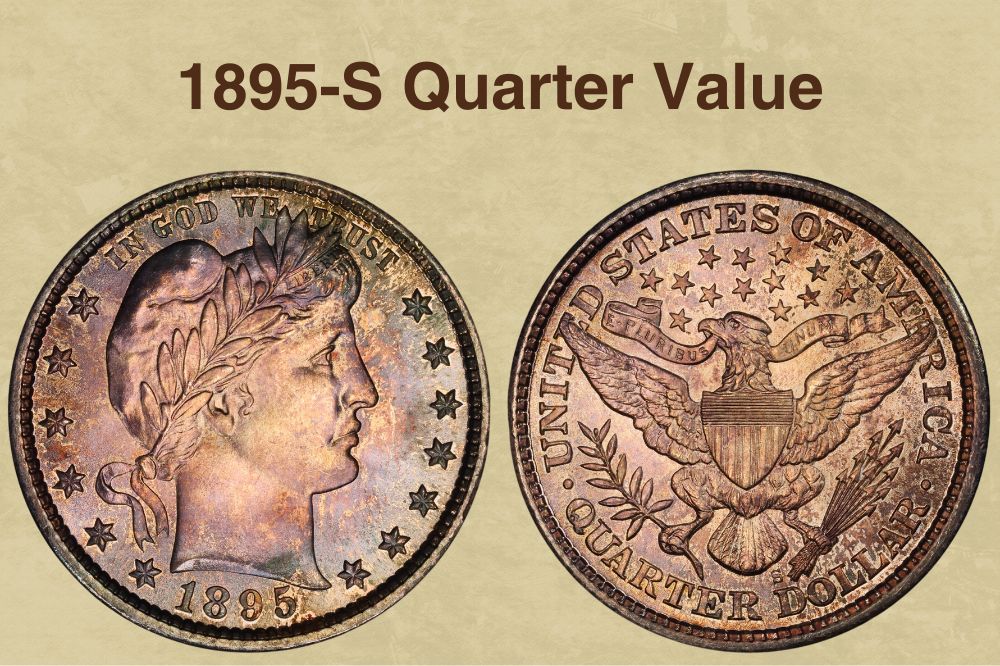
Let’s now look at the 1895-S quarter, which had the lowest mintage of 1,764, 681. The drop in production was a forecast of the drastic decline in production in 1896. Circulated examples in lower grades are common but the population dwindles from Fine upwards, with pieces commanding higher prices further up the grade.
Here’s a breakdown of the value of 1895-S quarters today:
- Circulated Examples: Survivors are heavily worn but even in lower grades, pieces will still fetch more than face value. For example, pieces graded Good will sell for as much as $35 and at least $150 for those graded Fine (F). At Extra Fine (XF) expect up to $275 while an About Uncirculated (AU58) will sell for up to $550.
- Mint State Examples: These are scarce, with lower grade Mint State survivors commanding significant premiums. An example graded MS60 will sell for as much as $700 while an MS63 will fetch at least $1300. Pieces graded MS64 and upward are extremely rare and will often command premium prices. For example, you can expect as much as $2200 for an MS64 and at least $3750 for a rare gem graded MS66.
- Auction Record: In 2005, Heritage Auctions sold a rare MS67 for a record-shattering $13,800.
1895 Proof Quarter Value

In addition to regular strike quarters, the Philadelphia Mint also produced 880 proofs for sale. At the time, this was a generous mintage after which sales of silver proofs declined over the next several years.
Here’s what to expect:
Regular Proofs: These are accessible to most collectors but do command premium prices. For example, at MS60 a piece will sell for as much as $390, an MS64 will bring in up to $1324, and a rare MS68 will fetch up to $14,000.
Cameo and Deep Cameo: These are extremely rare but are available to advanced collectors. Examples command between $1100 for an MS63 to $25,000 for an MS68 Deep Cameo. The most expensive piece is graded MS69CAM, which Heritage Auctions sold in 2021 for a remarkable $43,200.
Rare 1895 Quarter Errors List
Minting errors can boost the regular value of your 1895 quarter. There aren’t many noteworthy errors in the series but there are a few that can be a valuable addition to your collection. Here are some that are worth pursuing:
1. 1895 Quarter Re-punched Date Error
The re-punched date error is mostly seen on the 1895 no-mintmark quarters. This happens when the date is punched multiple times on the working die, resulting in an overlapping of the original and secondary dates. Sometimes, the digits in the original date are different from some of the digits in the secondary date.
The value of a re-punched date error mostly depends on the extent of overlapping. The more visible or peculiar the overlap, the more valuable the error tends to be. An 1895 quarter with a re-punched date error can be quite valuable with prices ranging between $20-$100.
2. 1895 Quarter Misplaced Mintmark Error
A misplaced mintmark error happens when the mintmark is positioned outside its normal position. This error is common in 1895-O quarters where the mintmark “O” on some coins is placed between the R in Quarter and D in Dollar on the reverse. In later quarters, the mintmark generally appears above the letter D. A misplaced mintmark error can add $20-$100 to the regular value of an 1895 Barber quarter.
3. 1895 Quarter Grease Struck-Through Error
Sometimes, foreign objects such as grease, hair strands, metal pieces and other debris can be accidentally struck between the die and planchet, causing the object to leave its impression on the coin’s surface.
In the case of a grease struck-through error, when drops of grease are present on the die, they can prevent the die from fully transferring the design to the planchet. This results in a coin with a smudged or blurry appearance.
A grease struck-through error can sell for as much as $20-$50, potentially increasing the value of your 1895 quarter.
Also read: 17 Most Valuable Quarter Errors Worth Money
FAQs
How much is an 1895 25 cent coin worth?
The value of an 1895 Barber quarter depends on its condition, mintage and mintmark. Generally, these historical coins are worth more than their face value, even in lower grades. Examples can sell for as low as $20 to as high as $20,000 or more.
How to tell if an 1895 quarter is real?
The first thing you should check is the coin’s features, including the diameter (24.30 millimeters), weight (6.30 grams), and edge (reeded). Also, inspect the inscriptions and design elements to ensure they look even and professionally done.
Is an 1895 quarter worth collecting?
An 1895 quarter in Mint State can be a valuable addition to your collection. Such uncirculated quarters are scarce and even rare in higher grades and command premium prices.
The post 1895 Quarter Value (Errors List, “O”, “S” & No Mint Mark Worth) appeared first on CoinValueChecker.com.
 The Store Opens Today 09 Am - 6 Pm
The Store Opens Today 09 Am - 6 Pm

